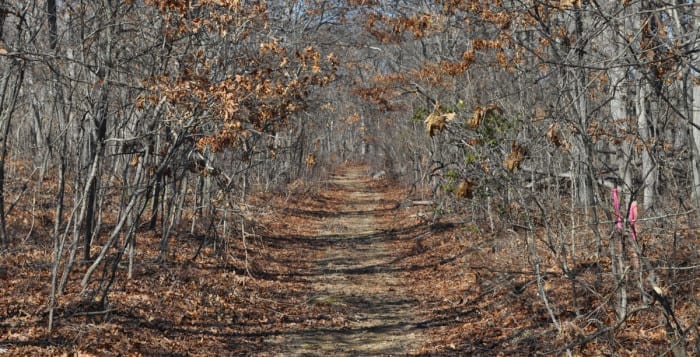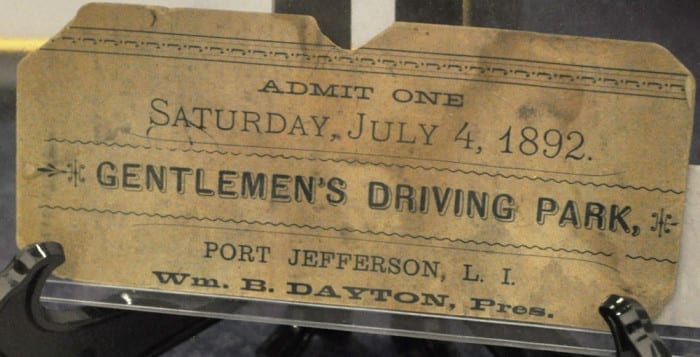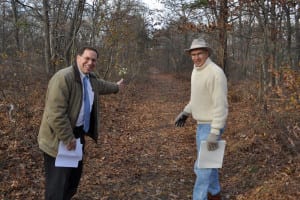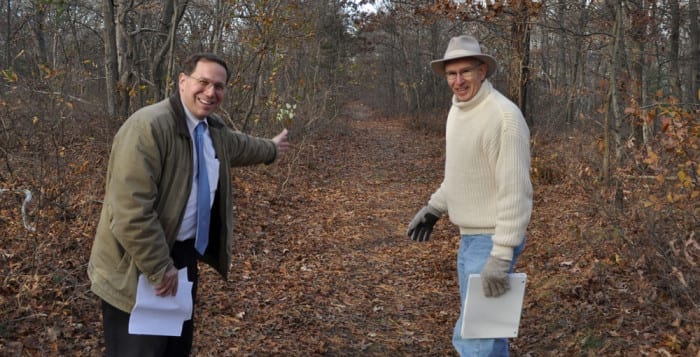By Elana Glowatz
Officials are on track to restore a piece of Long Island history, bringing an abandoned and forgotten horse-racing site back to life.
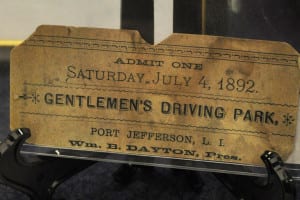
Brookhaven Town finished purchasing a swath of wooded land off of Canal Road in Terryville at the end of 2013, after Cumsewogue Historical Society President Jack Smith discovered the faint outline of the horse track and dug up information about what was once called the Gentlemen’s Driving Park. The town now owns the entire 11-acre site.
Today it’s an overgrown path hidden among trees, but the Gentlemen’s Driving Park used to be a place where Victorian Era bettors watched men race around the half-mile loop — counterclockwise — behind horses in carts called sulkies. It was part of a circuit of harness racing tracks in the Northeast, according to Smith, but likely fell into neglect with the rise of the automobile.
But cars have also helped keep the track viable: Smith previously reported that at least through the mid-1950s, kids raced jalopies around the track, preventing it from becoming completely overgrown.
Smith said on Monday the effort to restore and preserve the track is moving slowly, but there has been progress since the town finished acquiring the property. There are plans in place to clear the track to about 20 feet wide, although leaving larger trees in place, and to move up the southern curve of the oval, he said.
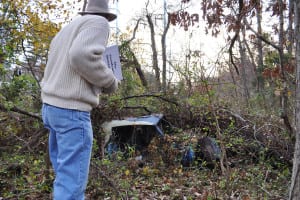
Currently, a small PSEG Long Island facility cuts into that southern tip. Rather than moving the facility or leaving the track incomplete, the town would retrace that small section of track, slightly shortening the loop but completing the oval so as to make a walkable path for visitors.
“The town is in the process of working on the track to restore the track as closely to the original footprint as possible,” Councilwoman Valerie Cartright (D-Port Jefferson Station) said in a statement this week. “There will be some adjustments needed and the town is actively working on that.”
If all goes according to plan, the councilwoman said, the restored track could open late in the summer or early in the fall.
“The important thing is that it will be an oval,” Smith said Monday. “We want to keep some of the historical integrity.”
His goal is to put informational signs around the track that will teach people about its history.
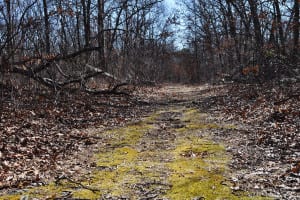
The driving park was adjacent to well-known horse trainer Robert L. Davis’ Comsewogue stables, now the Davis Professional Park. After hearing rumors of such a track in Terryville, Smith discovered it by looking at an aerial image of the neighborhood taken during the winter, when the foliage was less dense. He saw the faint shape in the woods near Canal Road and went walking in to find it. Since that visit, he has uncovered a broken pair of Victorian-era field glasses near the finish line on the track’s west side, which may have been dropped and trampled. He also has a ticket from a racing event on July 4. 1892.
Once restoration work is completed, Cartright said the town hopes to work with the historical society and the community “to hold a kickoff event to highlight the track and its history.”
For his part, the historical society president has said he would like to hold a fair in which people will re-enact the late 1800s horse races with vintage sulkies or participate in a carriage parade.
“We can’t be happier that it’s been preserved,” Smith said.

